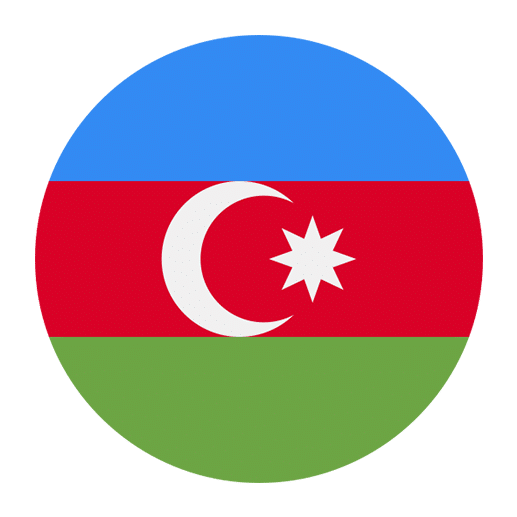Learning a new language is a journey full of exciting discoveries and sometimes amusing surprises. For English speakers diving into the Azerbaijani language, one such discovery is the intriguing difference between the words “çay” and “çiy”. Although they look and sound similar, these words have completely different meanings: “çay” means tea, and “çiy” means raw. Understanding the distinction between these two words is crucial for effective communication and avoiding potential misunderstandings. In this article, we’ll explore the etymology, pronunciation, usage, and cultural significance of these two words to help you master them.
Etymology and Origins
Çay (Tea)
The word “çay” in Azerbaijani has its roots in the Chinese word “chá” (茶), which means tea. Tea culture is deeply embedded in many countries, and Azerbaijan is no exception. The word traveled through the Silk Road, influencing numerous languages along the way, including Turkish, Persian, and Azerbaijani. In all these languages, the word for tea is quite similar, usually pronounced as “çay” or “chai.”
Çiy (Raw)
On the other hand, the word “çiy” comes from the Turkic languages and has been a part of Azerbaijani for centuries. It refers to something that is uncooked or in its natural state. This word hasn’t traveled far and wide like “çay” but has remained relatively stable in its meaning and usage within the Turkic language family.
Pronunciation
Çay
The pronunciation of “çay” is straightforward for English speakers. It’s pronounced as “chai,” with a hard “ch” sound, similar to the “ch” in “chocolate.” The “a” is pronounced like the “i” in “kite,” and the “y” sounds like a prolonged “ee.” Together, it sounds like “chai.”
Çiy
“Çiy” is a bit trickier. It’s pronounced as “chee,” with the same hard “ch” sound at the beginning. The “i” is pronounced as a prolonged “ee,” similar to the “ee” in “see.” So, it sounds like “chee.” The challenge lies in making sure not to confuse it with “çay,” as the meanings are entirely different.
Usage in Sentences
Çay
The word “çay” is used in a variety of contexts, primarily to refer to tea, a staple drink in Azerbaijani culture. Here are a few examples:
– Mən çay içirəm. (I am drinking tea.)
– Sən çay istəyirsən? (Do you want tea?)
– Bizim evdə hər gün çay süfrəsi qurulur. (In our home, a tea table is set every day.)
In Azerbaijani culture, tea is more than just a beverage; it is a social experience. Inviting someone for tea is a common way to welcome guests and engage in conversation.
Çiy
“Çiy” is used to describe something that is raw or uncooked. Here are some examples:
– Bu ət çiydir. (This meat is raw.)
– Çiy tərəvəzlər daha sağlamdır. (Raw vegetables are healthier.)
– Balıq çiy ola bilməz. (Fish cannot be raw.)
In Azerbaijani cuisine, the distinction between cooked and raw ingredients is important, especially in terms of food safety and culinary practices.
Cultural Significance
Tea (Çay) Culture
Tea drinking is an integral part of Azerbaijani culture. It’s common to see people enjoying tea at any time of the day, whether at home, work, or in tea houses. Tea is usually served in small, pear-shaped glasses called “armudu stəkan.” The tea is often accompanied by sweets, jams, or traditional Azerbaijani pastries like pakhlava and shakarpura. The act of sharing tea is considered a gesture of hospitality and friendship.
Raw (Çiy) Foods
While raw food might not have the same cultural significance as tea, it still plays an essential role in Azerbaijani cuisine. Salads made from raw vegetables are common, especially during the summer months. Freshness and natural flavors are highly valued, and raw ingredients are often used to showcase these qualities. However, the concept of raw food extends beyond vegetables to include dishes like pickled vegetables and marinated meats, which are also cherished.
Common Mistakes and Tips
Given the similarity in spelling and pronunciation, it’s easy to mix up “çay” and “çiy.” Here are some tips to help you avoid common mistakes:
1. **Context is Key**: Always consider the context in which the word is used. If the discussion is about beverages or social gatherings, “çay” is the likely word. If the topic is food preparation or ingredients, then “çiy” is more appropriate.
2. **Practice Pronunciation**: Spend time practicing the pronunciation of both words. Record yourself and compare it to native speakers to fine-tune your pronunciation.
3. **Use Mnemonics**: Create a mnemonic to remember the difference. For example, you might think of “çay” as “cha” in “chai tea” and “çiy” as “chee” in “cheese,” which can sometimes be eaten raw.
4. **Listen and Repeat**: Engage with native Azerbaijani speakers, listen to how they use these words, and practice repeating after them. This will help you get a feel for the correct usage and pronunciation.
Conclusion
Mastering the difference between “çay” and “çiy” is an essential step for anyone learning Azerbaijani. While these words may look and sound similar, they occupy very different spaces in the language and culture. Understanding their etymology, pronunciation, usage, and cultural significance will not only improve your language skills but also enrich your appreciation for Azerbaijani traditions and customs.
So the next time you find yourself in Azerbaijan or speaking with Azerbaijani friends, you’ll know exactly whether to offer them a cup of “çay” or discuss the benefits of “çiy” foods. Happy learning!

